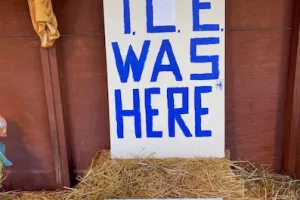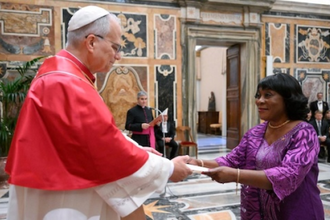Scientist claims new evidence on Turin Shroud
A new scientific paper on the Turin Shroud claims that earlier research, which dismissed the relic as a medieval fake, was based on flawed evidence.
The paper, by Raymond N Rogers, retired Fellow of the Los Alamos National Laboratory, published on January 20 in the latest issue of the journal Thermochimica Acta, concludes: "As unlikely as it seems, the sample used to test the age of the Shroud of Turin in 1988 was taken from a rewoven area of the Shroud. Pyrolysis-mass spectrometry results from the sample area coupled with microscopic and microchemical observations prove that the radiocarbon sample was not part of the original cloth of the Shroud of Turin. The radiocarbon date was thus not valid for determining the true age of the Shroud."
In a press release earlier this week, Rogers stated: "The radiocarbon sample has completely different chemical properties than the main part of the Shroud relic. The sample tested was dyed using technology that began to appear in Italy about the time the Crusaders' last bastion fell to the Turks in AD 1291. The radiocarbon sample cannot be older than about AD 1290, agreeing with the age determined (for the sample) in 1988. However, the Shroud itself is actually much older."
As a result of his own research and chemical tests, Rogers concluded that the radiocarbon sample is totally different in composition from the main part of the Shroud of Turin and was cut from a medieval reweaving of the cloth. Rogers was also the leader of the chemistry group for the Shroud of Turin Research Project (STURP), the scientific team that performed the first in-depth scientific examination of the Shroud in 1978.
Rogers' new research disproves the 1988 findings announced by British Museum spokesperson, Michael Tite, when he declared that the Shroud was of medieval origin and probably "a hoax."
The British Museum coordinated the 1988 radiocarbon tests and acted as the official clearing house for all findings.
The original carbon-14 dating protocol had called for chemical analysis of the samples prior to their destruction during the testing. However, that analysis was never performed by any of the three dating laboratories. Each lab was given a small portion of the single sample cut from a corner of the Shroud specifically for the tests.
It is difficult to predict whether the anomalous nature of the sample would have been detected had the chemical analysis been performed, but it might have led the laboratories to request additional samples be taken from other areas of the Shroud to validate the accuracy of their results. As it was, the three laboratories concluded that their results were correct to a 95% certainty, a claim that, according to some experts, is difficult to support based on the single sample tested.
Another issue that arose in Ray Rogers' study was the finding of cotton fibres in the sample used for C-14 dating. There was no cotton found in any of the samples taken by the STURP team from the main body of the Shroud cloth in 1978. Yet even the Oxford lab, one of the three labs that performed the C-14 dating in 1988, reported they found cotton in the fibres of the sample they tested.
My thanks to Rev. Albert "Kim" Dreisbach, Jr., for providing me with the additional information and several references to this cotton issue in an e-mail today. I have included his comments at the following link: Cotton Fibre in C-14 Sample. Almost immediately after the results were released in 1988, Shroud analysts questioned the validity of the sample used for the dating. In fact, one researcher with considerable experience in radiocarbon dating ancient artefacts, University of Hong Kong based archaeologist William Meacham, presented a paper in 1986, two years before the infamous dating, outlining his concerns. Titled, "Radiocarbon Measurement and the age of the Turin Shroud: Possibilities and Uncertainties," it suggested that contamination could easily skew the results. Unfortunately, it went largely unnoticed. In light of Rogers' recent work, it is undoubtedly well worth re-reading.
More recently, researchers M Sue Benford and Joseph Marino, using high-resolution photographs of the Shroud and enlisting the aid of textile experts, found indications of an "invisible" reweave in the area used for the C-14 testing. They presented a series of controversial papers at Shroud conferences that revealed their results, including Evidence for the Skewing of the C-14 Dating of the Shroud of Turin Due to Repairs in 2000 and Historical Support of a 16th Century Restoration in the Shroud C-14 Sample Area and Textile Evidence Supports Skewed Radiocarbon Date of Shroud of Turin in 2002.

















